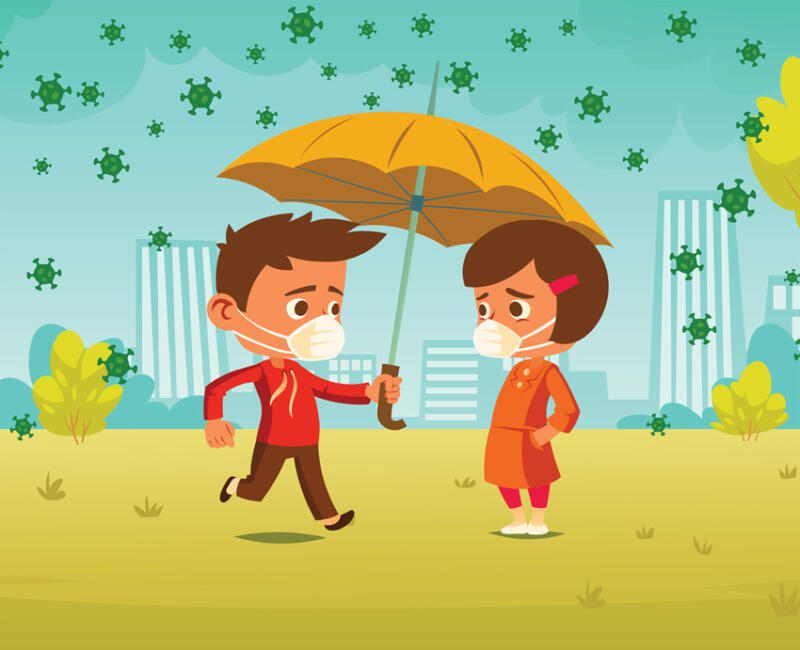The Worsening Mental Health of America’s Children: A Rude Awakening
A recent CDC report on a survey of high school students revealed that 55.1% describe suffering emotional abuse, 44.2% reported persistent feelings of sadness or hopelessness and 9% attempted suicide. Different groups suffered a bit differently, according to the survey: more young women and LGBTQ+ youth saw a rise in suicidal behavior, more Asian kids confronted racism and hate, more Black youth and Native Americans experienced hunger and economic devastation and along with Latinos, suffered the mental stress of the effects of the pandemic in their essential worker families and communities.

At a briefing held by Ethnic Media Services, April 15, a panel of experts – Angela Vásquez, MSW, Policy Director for mental health at The Children’s Partnership; Dr. Ilan Shapiro, Pediatrician, Chief Medical Affairs Officer of AltaMed federally qualified health centers, Los Angeles; Dr. Myo Thwin Myint, Assistant Professor of Psychiatry, Tulane University School of Medicine, He serves on the American Academy of Child and Adolescent (AACAP) Training and Education Committee New Orleans, Louisiana; and Sydney McKinney, Ph.D, Executive Director of the National Black Women’s Justice Institute in Brooklyn, NY – explain what is happening and talk about what parents and others can do to avert another “pandemic,” that of future adults with serious emotional and mental disorders.
Angela Vásquez, a social worker and policy director for mental health at The Children’s Partnership said “the impacts of COVID-19 have been multi-layered and across a variety of issues. The challenges that our young people are experiencing are directly related to the other components of their lives.
“What we’re seeing now for young people in the recent CDC data is is not an anomaly, it’s a crisis that has been building since before the pandemic. Nearly 50 percent of youth who were severely impaired with a major depressive episode did not receive treatment. Black and Latinx children were about 14 percent less likely than White youth to receive treatment for their depression although just as likely to be depressed.
“Suicide is the second leading cause of death for native youth so nearly three and a half times higher than the national average and high school girls across all races and ethnicities made plans to attempt suicide more than boys so there’s also a gender component in terms of disparities around mental health. Black and Latino girls were twice as likely to attempt suicide as Black and Latino boys and, over half of Latina girls are worried about a friend or family member being deported. Nearly a quarter have been harassed because of their family name or country of origin.
“Since the pandemic started, Asian youth have been experiencing harassment and bullying because of their ethnicity and heritage.
“LGBTQ youth from American Indian and Alaskan Native backgrounds were two and a half times more likely to report a suicide attempt in the past year compared to their non-native LGBTQ peers.
“The children’s partnership released a report about the effects of hostile immigration policies on children’s mental health. Family separation harms children’s mental and physical health. Children of undocumented parents are at risk of behavioral problems. Having parents taken away undermines family economic security and the climate of fear further restricts children’s access to education public benefits and other services.
“Policing disproportionately impacts Black and Black indigenous and people of color children and youth. Exposure to violence is an adverse childhood experience. Trauma and stress are disproportionately impacting children. Discrimination is directly impacting our youth well-being, and finally, direct and vicarious exposure to police violence including immigration enforcement are contributors to toxic stress. There’s a level of vicarious trauma happening that really came to a head in the summer of 2020 after the murder of George Floyd.
“Not only is gun violence associated with children’s emergency room visits but high police contact is associated with neighborhoods with pre-term birth.
“The Children’s Partnership, along with our partners, really want to start looking at what can we do about this crisis, so we started planning this work sort of as the pandemic was starting and escalating, and what we really wanted to ensure through our policy work is to ensure that that we remind policy makers and adults that positive experience matters. While we need to focus on reducing and mitigating those negative experiences we also need to focus on positive experiences and promoting positive mental health in our young people. Together with the National Black Women’s Justice Institute we established the hope, healing, and health collective which is a group of 15 community-based organizations from across the U.S. who came together to form a youth policy council over the last year.
“Youth advocacy is an essential strategy to supporting Black and Brown youth. Civic engagement, in particular, can actually be a mental health intervention.
“It’s important to recognize that building opportunities for young people to speak truth, to power, to connect with community,” concluded Vásquez.
Dr Ilan Shapiro, a pediatrician said, “We do not talk about kids. We want to help them, we understand that they are imperative, and they are part of our futures, but sometimes we just don’t have time or willingness, or we just are afraid of finding out what’s happening.
“Right now, many kids that have lost a part of their lives, one of the things that we started to seeing early on was they were not coming to the clinics, but afterwards the repercussion of what we have seen in the past two years has hurt our community in a big way.
“Depression anxiety is real. Our communities are exposed to a lot of things. It’s very easy, a lot of the times, to just follow the checklist that we have as doctors, like, it will make sure that you’re running; make sure that you have access to public spaces; make sure that you’re breathing oxygen; and a lot of our communities do not have that part. and they’re extremely affected with social determinants of health.
Where we have a complete community trying to make sure that we’re creating a better future, this is not the way to do it. We are right now creating less green spaces. If you look at our children right now, they were behind a lot of barriers, from physical barriers, mental health barriers, and of course, when they are exposed to a lot of the things, it’s important to talk about the adverse childhood events that I’m seeing. It’s so sad.”
“Our kids do not know how to handle this. This is just the beginning. It has ramification in obesity, in addictions, it has a problem with our kids when they go to school, and they want to go to college, and they want to work, and be part of the society in different levels,” said Dr Shapiro.
Dr. Myo Thwin Myint said “Many of the clinicians both physician and the psychologists analysis clinical like mental health and physical health clinicians are burning out even before the pandemic and our health care systems continue to challenge us to take care of patients in the family.
“I think we are making progress in awareness and de-stigmatizing, however, we have yet to solve how we actually take care of all the needs and pandemics just did not help.
“Not that long ago the surgeon general has actually put it out that there is a general mental health advisory and crisis is happening. There is a recognition from the federal government and we hope that what follows would be the investment in our youth mental health,” said Dr Thwin Myint.
Sydney McKinney, Ph.D, said, “Addressing the mental health and wellness of black women and girls is really vital to reducing their risk of coming into contact with the juvenile legal and the criminal legal systems.”
“Nearly 2 million young people are arrested by police every year and data show that 75 of those youth have experienced traumatic victimization in their lifetime. When we think about young folks who are impacted by youth detention, four out of five girls who are in youth detention are diagnosed with a mental health need and Black girls account for 43 percent of girls who are in youth detention, which is more than any other racial and ethnic group.
“Similar statistics exist for Black women regarding severe mental illness as well as trauma.
“These are factors that heighten their risk during the pandemic,” said McKinney.
“We have seen that the pandemic has exacerbated the mental health needs of black girls and gender expansive youth who are directly impacted by the foster care and child welfare systems or foster care and the juvenile legal systems.
“I think one of the things that was important for us to flag was that while it (the pandemic) had exacerbated the mental health needs it also created new mental health challenges for young people as well,” said McKinney.


